Working with archives, there are many tips you can follow that can have a positive impact on what you might find and how you might interpret your findings. Sometimes returning to documents you have already examined – even vaguely forgotten about – can prove really fruitful. And this applies to medieval as much as to modern collections. A case in point is the recent rediscovery, presented here, of what may ultimately prove to be the earliest portrait of an identified English king in a public record.
During a lifetime devoted to the study of King Henry III (1216-1272), the 750th anniversary of whose death (16th) and burial (20th) falls this week, Professor David Carpenter from King’s College London has examined thousands of sources (literary, archival, artistic and architectural) to build up a rich, multi-faceted biographical portrait of medieval England’s longest-reigning monarch (see footnote 1). We owe to David much of our understanding of the complexities of Henry’s personality – his warmth, his humanity and his intensely religious character jarring with his lack of intelligence, impulsive and uncertain nature, a king vacillating and easily influenced (footnote 2) – even if Henry was self-aware enough reportedly to proclaim ‘I prefer to be thought a king foolish and remiss than cruel and tyrannical’ (footnote 3). But what of Henry’s physical appearance?
While researching illustrations for the second volume of his monumental biography, to be published in 2023 by Yale University Press in their English Monarchs Series as Henry III, 1259-1272: Reform, Rebellion, Civil War, Settlement, David vividly recalled having seen a small sketch of a crowned head, identified as Henry III, drawn onto one of the account rolls of Henry’s Exchequer, the financial arm of medieval royal government. Making use of The National Archives’ bulk order service, he recently ordered up a large number of memoranda rolls, those detailed notes written on parchment (prepared animal skin, usually sheep or goat) during the audit of royal accounts. On the protective outer cover of the roll for the 51st year of Henry’s long reign (1266/7), also made of parchment but of a more robust thickness, there re-emerged a faint sketch of a crowned male head from the dirt and wear. Images of the roll itself have been freely available for over a decade on the Anglo-American Legal Tradition website. However, images of the cover are inexplicably omitted there, and so our royal head has been lost to modern researchers. Until now!
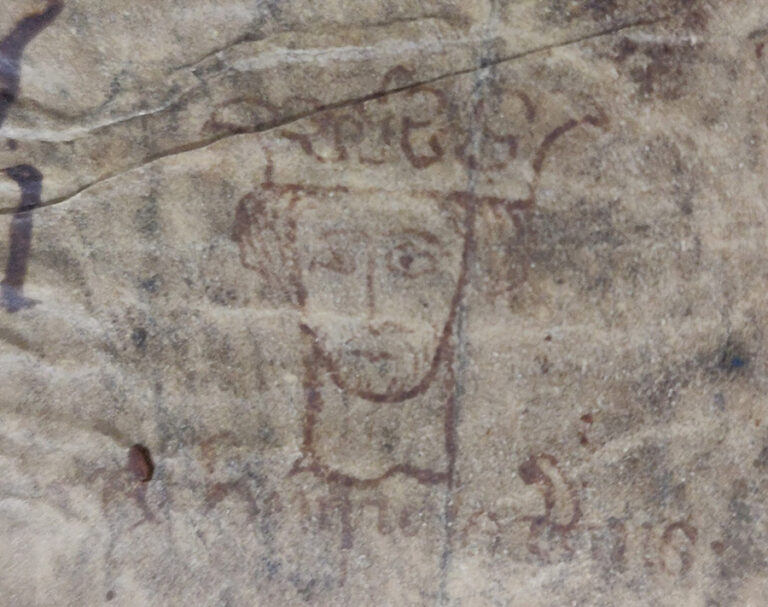
As you can see, here we have a bearded Henry (admittedly wispy, perhaps to reflect his advancing age – he would have turned 60 in 1266/7) wearing a five-pointed crown atop his flowing hair. This closely reflects the image from Henry’s tomb effigy, perhaps the best known portrayal of the king at his beloved Westminster Abbey, although not meant to represent Henry in life. Likewise, imagery of Henry in majesty displayed on his great seals, perhaps the medium in which royal imagery was encountered by the bulk of the population, reflects contemporary ideals rather than personal traits.
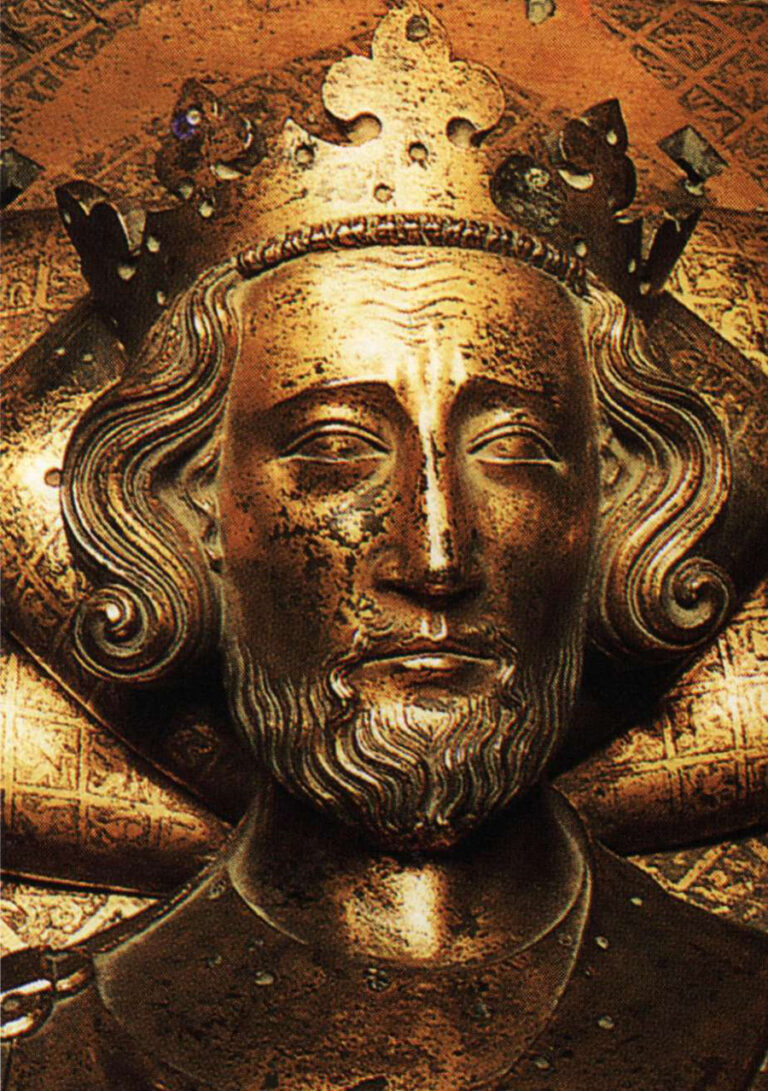
Beneath our sketch is the Latin legend – in what looks to be a contemporary hand – Rex Henricus tercius (‘King Henry III’), making the identification unambiguous. This suggests it would perhaps have been drawn during Henry’s life, or shortly after his death in 1272. What is potentially of most significance, though, is the way in which the artist appears to have drawn the king’s right eye. A cursory glance shows that while the left eye is drawn oval-shaped, wide open and staring out, the right eye seems distinctly different. The lid appears to be closing over the eye in a semi-squint.
In the only surviving physical description of King Henry, written in the early 14th century by the Dominican friar Nicholas Trevet, himself born during the second half of Henry’s reign in around 1258, Trevet describes Henry as of average height but strongly built and compact. However, he also notes a physical defect in that one eyelid drooped to hide part of the black pupil (footnote 4). To some extent, this is also reflected in the famous portrait of Henry by the St Albans chronicler Matthew Paris, with whom Henry had enjoyed many intimate conversations and so was well placed to have known the king’s facial features, in the gallery of kings entered in his Historia Anglorum (‘History of the English’), now MS Royal 14 C VII at the British Library. Frustratingly for us, Matthew draws the left eye with a drooping lid. The condition of the cover also made us doubt the depiction, as there appears to be lines running across the face that could be obscuring the actual drawing.
To try and get under the dirt and damage, we called on colleagues in The National Archives’ Collection Care Department: Dr Lucia Pereira Pardo, senior conservation scientist and an expert in modern imaging technology, imaged the cover using our multi-spectral imager. This allows us to explore the possibilities of using different wavelengths of light to capture details that can no longer be seen by human eyes (footnote 5). In the following images you can see a plain image of the cover, a second under raking light which dramatically shows the physical damage, and a third which provides a false colour image of the sketch under ultra-violet light enhancing the visibility (blackness) of the iron gall ink.
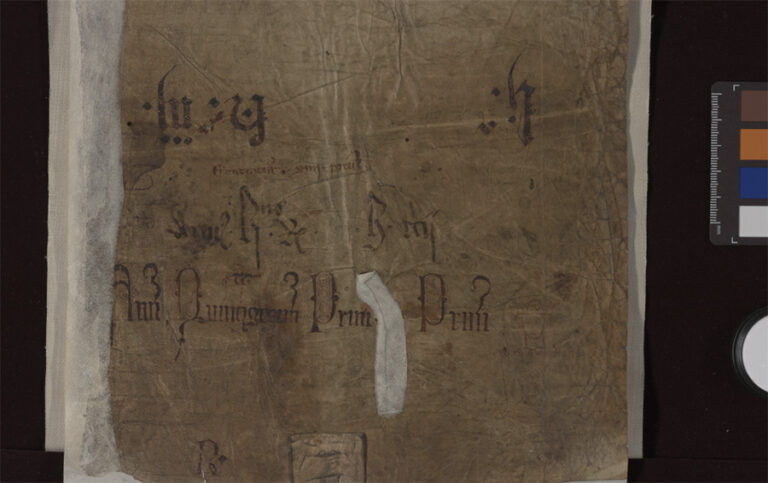
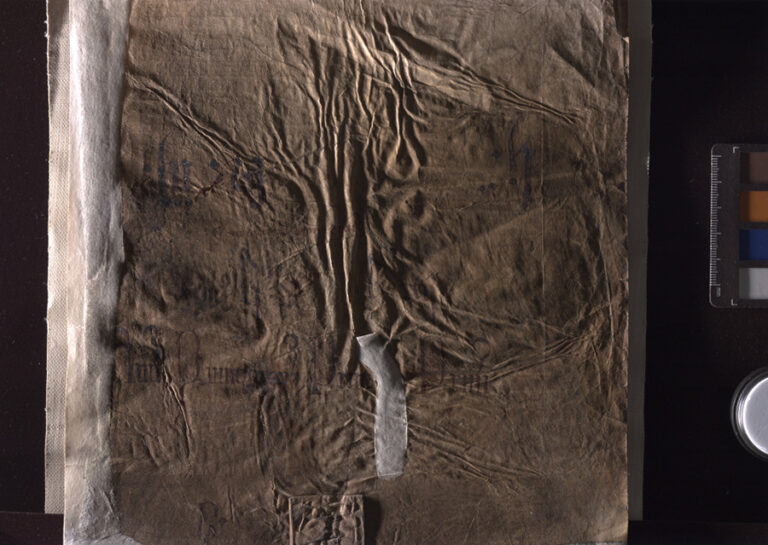
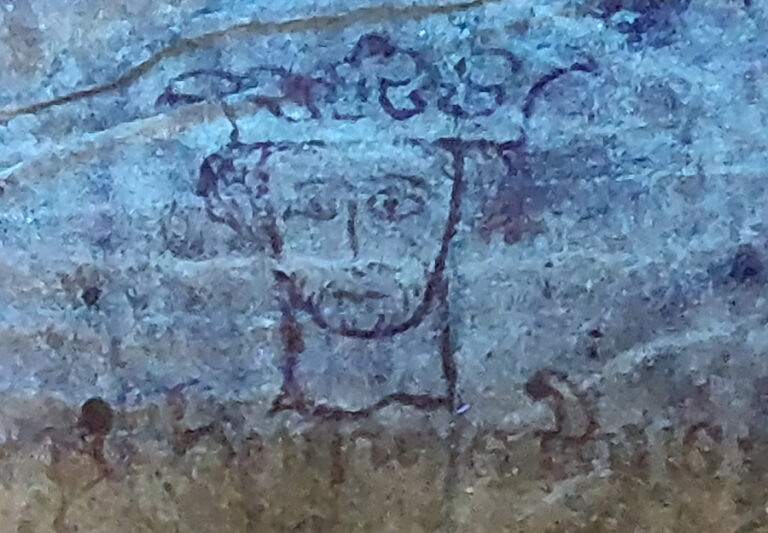
There is no doubt that the right eye is drawn differently to the left eye, and that the lid is closing. Certainly, clerks in the Exchequer, based at Westminster, would have been better placed than most of their fellow subjects to know of Henry’s physical features. We can only speculate that when the cover was pristine, as opposed to being tucked away inside, the head must have been very visible to the Exchequer clerks. Might our artist have been sharing a joke with his fellow clerks – look, here is Henry, and I have drawn his sleepy eye!?
Conversely, any kind of drawing in public records is exceedingly rare before this date; those which do survive often have the quality of a doodle and were not meant to be lifelike. Take, for example, these images of a youthful, clean-shaven, crowned head from the roll of the judicial eyre (justices on circuit trying various pleas) in Kent in 1255, presumably an idealised King Henry. This is taken to represent the lathe (administrative district) of Aylesford, which was held by the crown. There is a mitred head, presumably the archbishop of Canterbury who controlled the lathe of St Augustine, and another ecclesiastical head with a tall, bejewelled headpiece, representing the lathe of Scray controlled by the abbot of St Augustine, Canterbury (footnote 6).
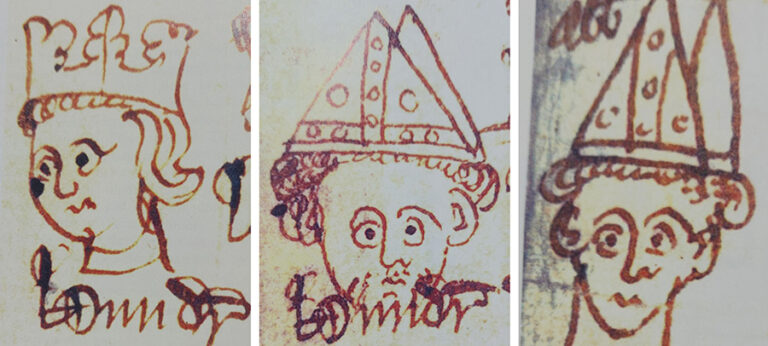
Naturally therefore, while it does seem plausible, not to say seductively likely, that the artist on the memoranda roll cover has actually tried to depict a known physical defect of the king, we must exercise notes of caution. Nonetheless, both Henry and his son, Edward I (1272-1307), are known to have suffered from the same condition, argued to be congenital ptosis, a largely benign condition, and a skilled artist might have tried to replicate this even in a doodle.
But why are there doodles of this nature on medieval government documents, which are otherwise transactional and heavily textual, in the first place? Medieval government clerks are known for their sense of humour, which is best revealed through their doodling. Such sketches might represent an attempt to leaven the drudgery of copying and/or drafting banal text drowning in repetitive legal formulae or even, as Euan Roger recently demonstrated in a memorable TikTok post, get their own back on their hated masters. Andrew Hershey has explored this phenomenon in detail with respect to legal records, and some images do have a comedic quality which imply a freedom of expression being permitted at court (footnote 7). One obvious, if more mundane interpretation (though not in the case of our sketch) is that the doodles act as references for the clerks accessing records that are not otherwise indexed, as aide-memoires for searchers. In terms of depictions of identifiable crowned kings, the image of Edward I from the memoranda roll for his 25th regnal year (1296/7) stands out as a direct comparator.
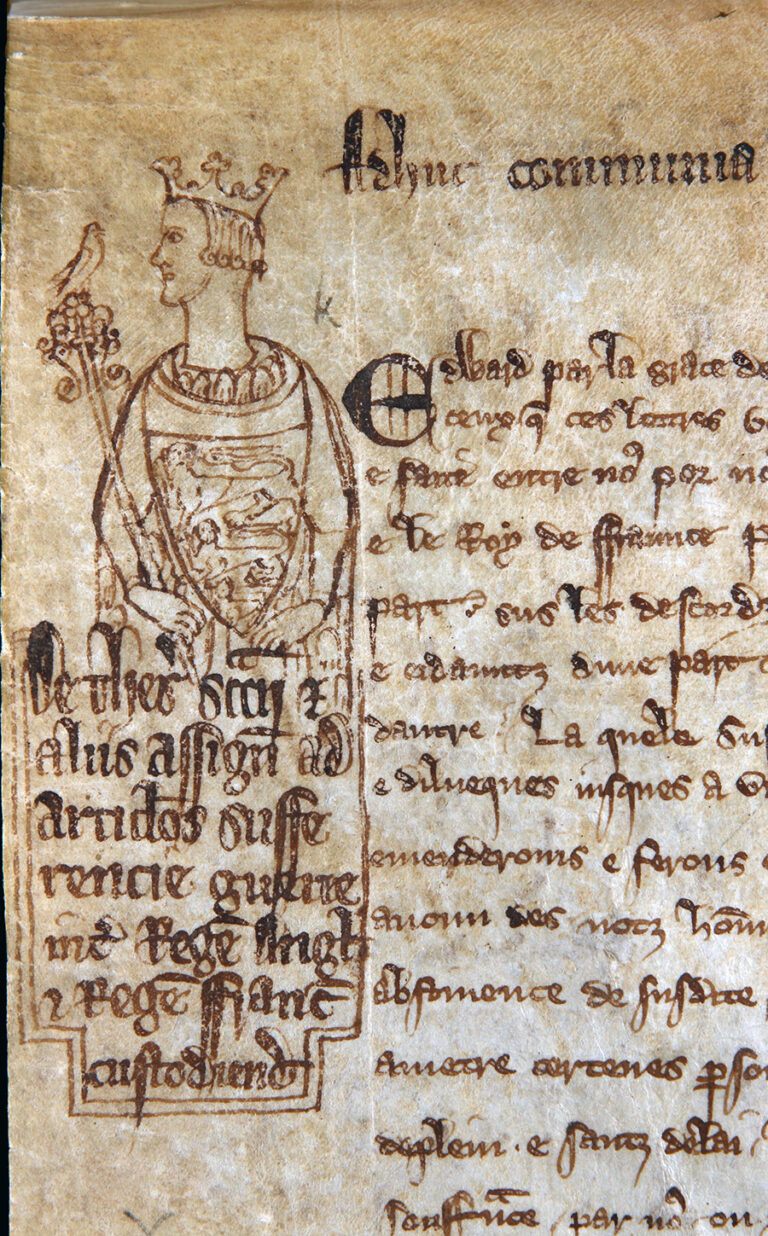
Like our sketch, this roll has an Exchequer provenance. Similarly, and perhaps most impressively, the Liber A, a compendium of important records held in the Exchequer compiled in c. 1302, is stuffed full of doodles. These pictograms are used by the clerks as references in both a table of contexts and in discrete sections relating to particular topics or types of records (treaties, Wales, Scotland, Ireland, Gascony etc.) Some have a distinctly racialized view of subject peoples, notably the bare-footed Irish axeman and Welsh archer.
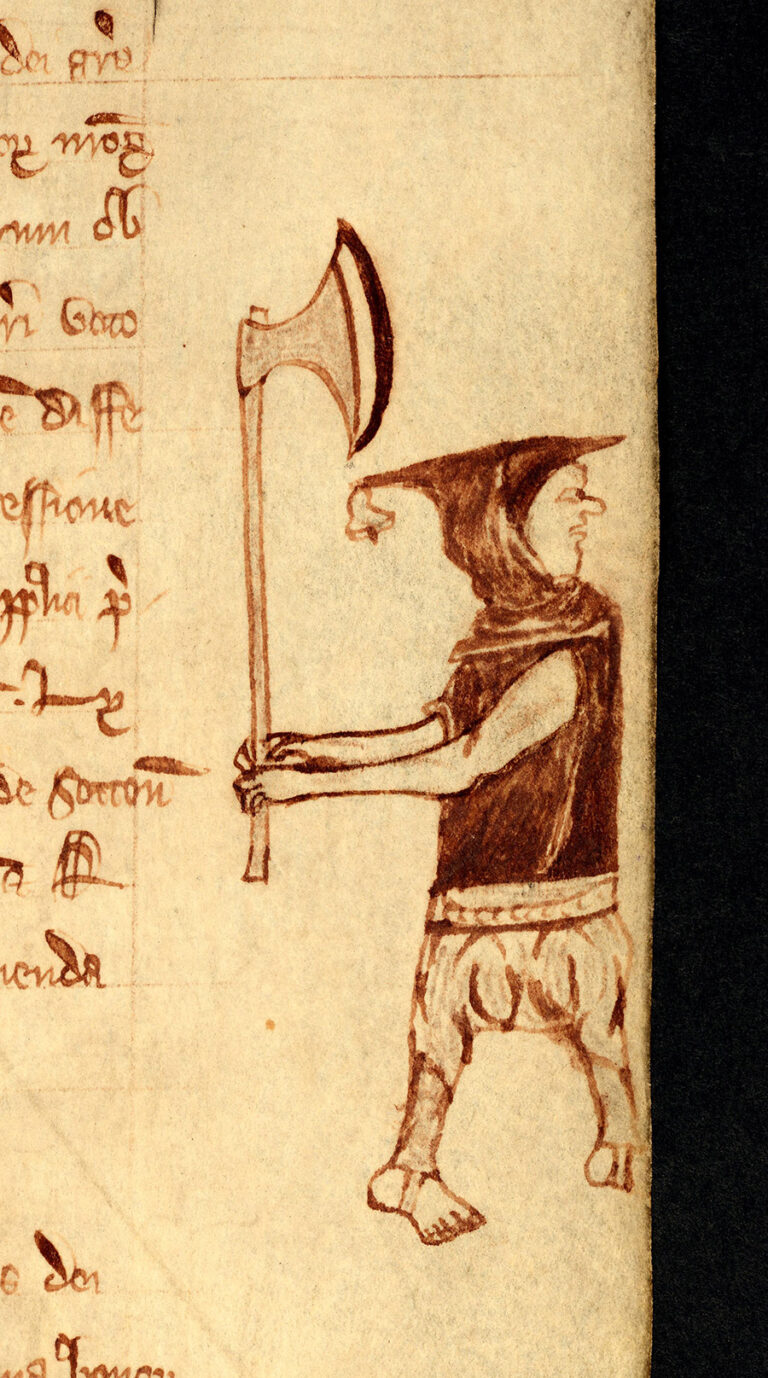
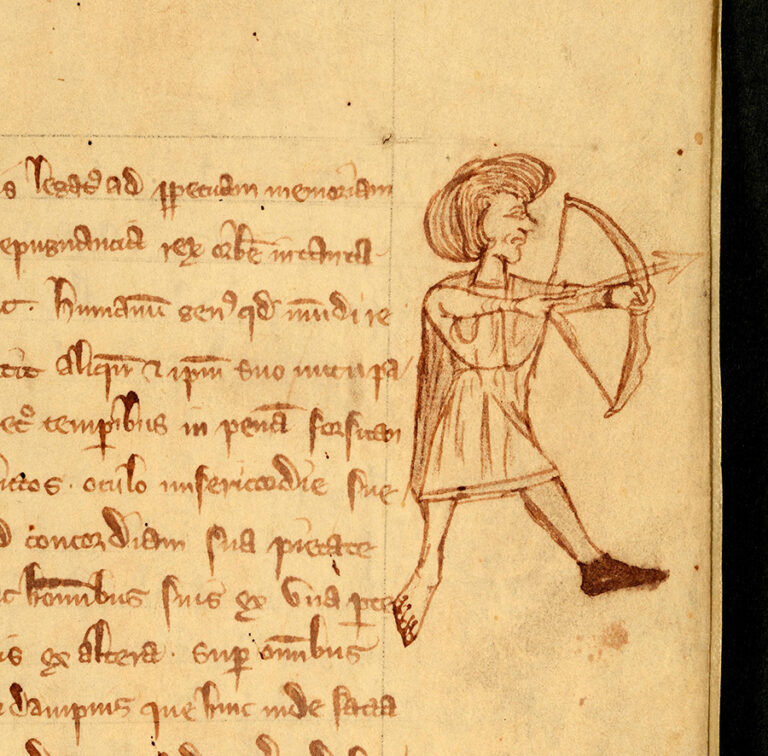
Other images in Exchequer documents belie yet more sinister motives, especially the infamous sketch at the head of the roll of receipt from a tallage (tax) on the Jewish community in England from 1225/6. Here, in the centre, surrounded by anti-Semitic imagery, we have a crowned head with three faces, though here labelled with a layman’s name, that of Isaac of Norwich (footnote 8).
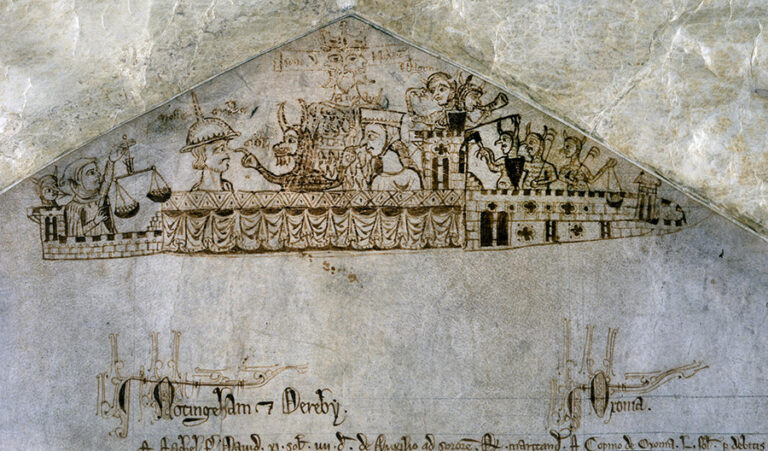
The doodling of faces around the margins of record text is certainly not uncommon, then, in medieval England. Images of royalty and aristocracy, lay and ecclesiastical, also appear with increasing frequency from the reign of King Henry III. Nonetheless, identified individuals are as rare as hen’s teeth, particularly in the membranes of closely written parchment which usually constitute the archives of medieval royal administration. Though we must remain sceptical (for now), the tiny, damaged sketch on the cover of the memoranda roll for 1266/7 might represent, in however a loose style, an intended depiction of a king whose foibles were more personal than physical but whose humanity stares out at us from across the centuries (footnote 9).
Footnotes
- The fruits of this research can be found in dozens of publications, but most notably: D A Carpenter, Henry III, 1207-1258: the Rise to Power and Personal Rule (New Haven and London, 2020); The Reign of Henry III (London, 1996); and The Minority of Henry III (London, 1990).
- Carpenter, Henry III, pp. 23-4, 55, 59, 66, 167.
- Attributed to Henry by the chronicler Roger of Wendover: Matthaei Parisiensis, Monastici Sancti Albani Chronica Majora, ed. H R Luard, 7 vols (London: Rolls Series 57, 1872-83), iii, p. 233.
- Nicholas Trevet, Annales Sex Regum Angliae, ed. Thomas Hog (London, 1845), p. 280.
- For use of the imager in other contexts see the posts by Lucia Pereira Pardo and Natalie Brown on this blog.
- Andrew H Hershey, Drawings and Sketches in the Plea Rolls of the English Royal Courts, c. 1200-1300 (Chippenham: List & Index Society Special Series 31, 2002), p. 22.
- Hershey, Drawings and Sketches, p. 18.
- For more on this controversial image see The National Archives’ Education resource page: www.nationalarchives.gov.uk/education/resources/jews-in-england-1216-72/.
- I would especially like to thank David Carpenter for working with me closely on this blog post. The advice of Professors Paul Binski, Paul Brand, Julia Crick, Julian Luxford and Nicholas Vincent has also been invaluable. All errors are my own.